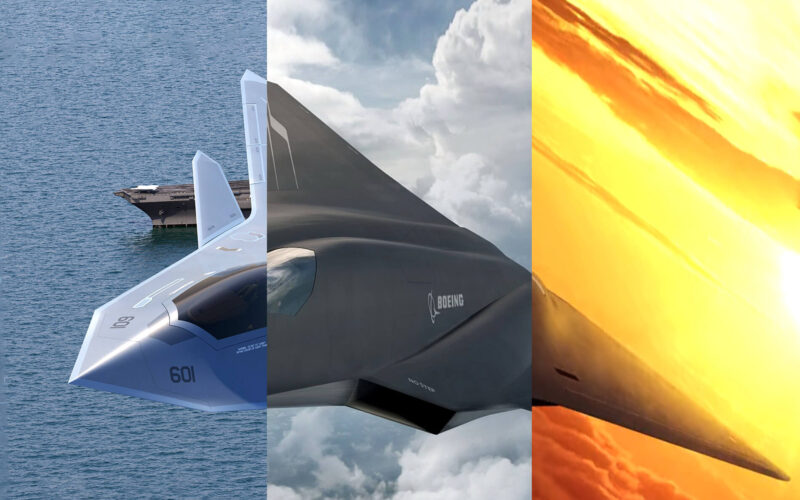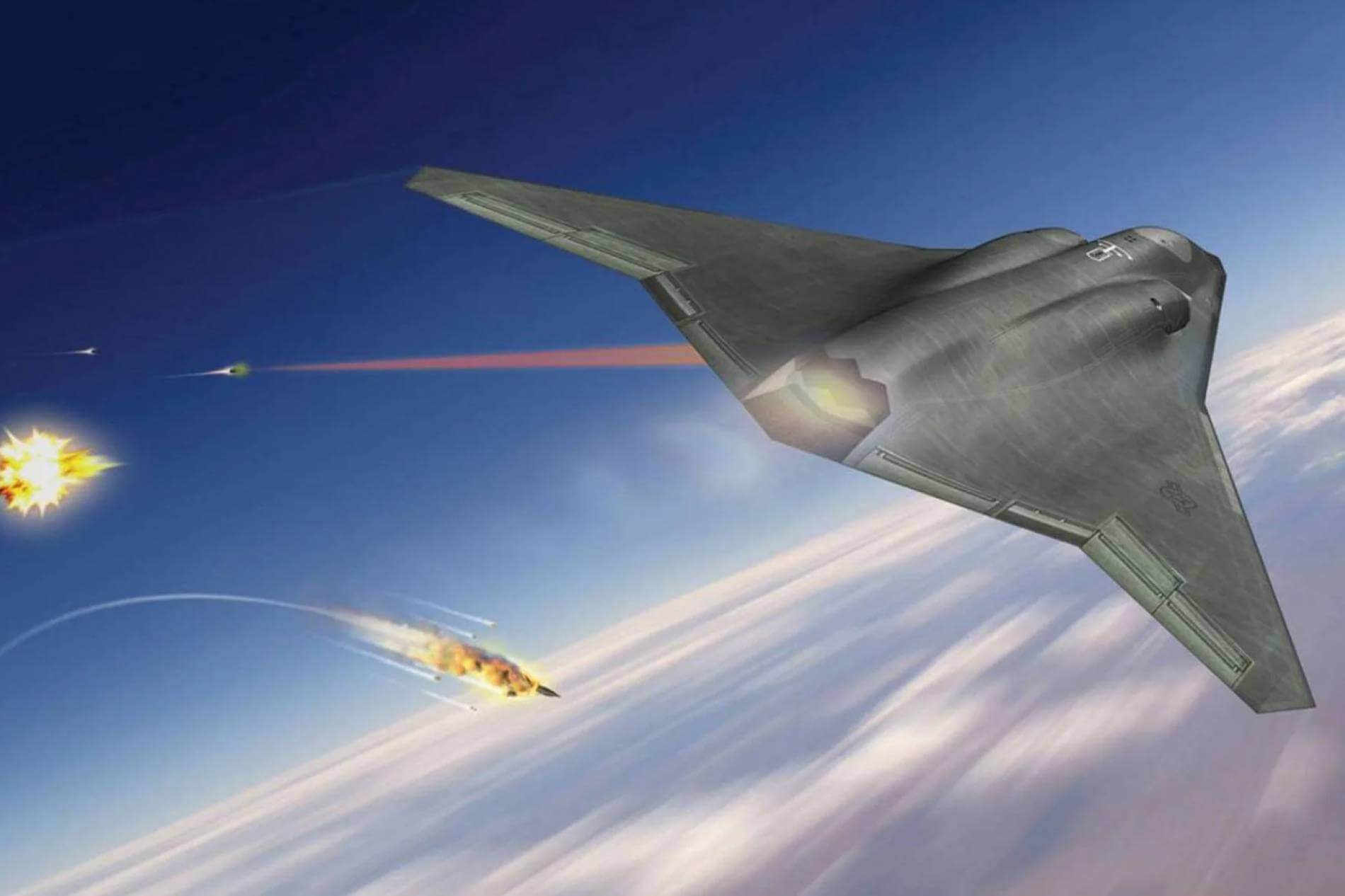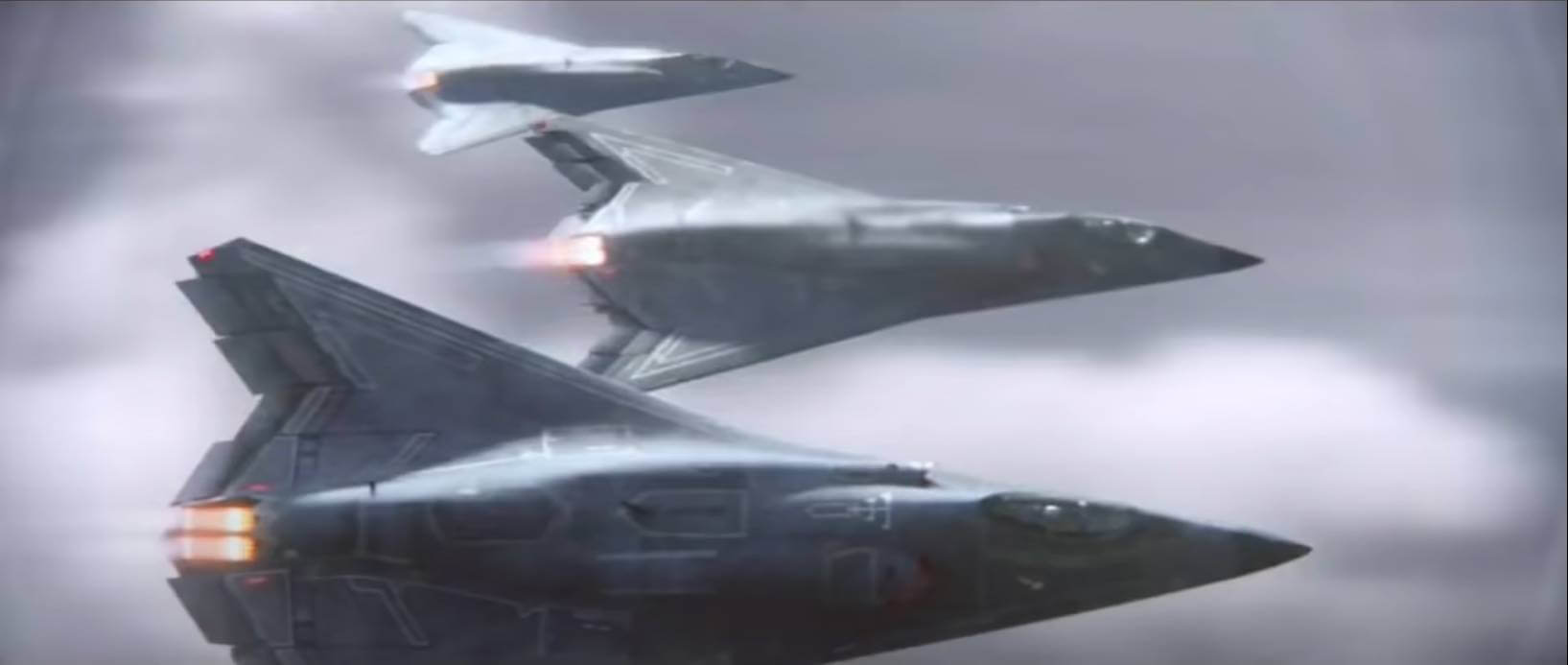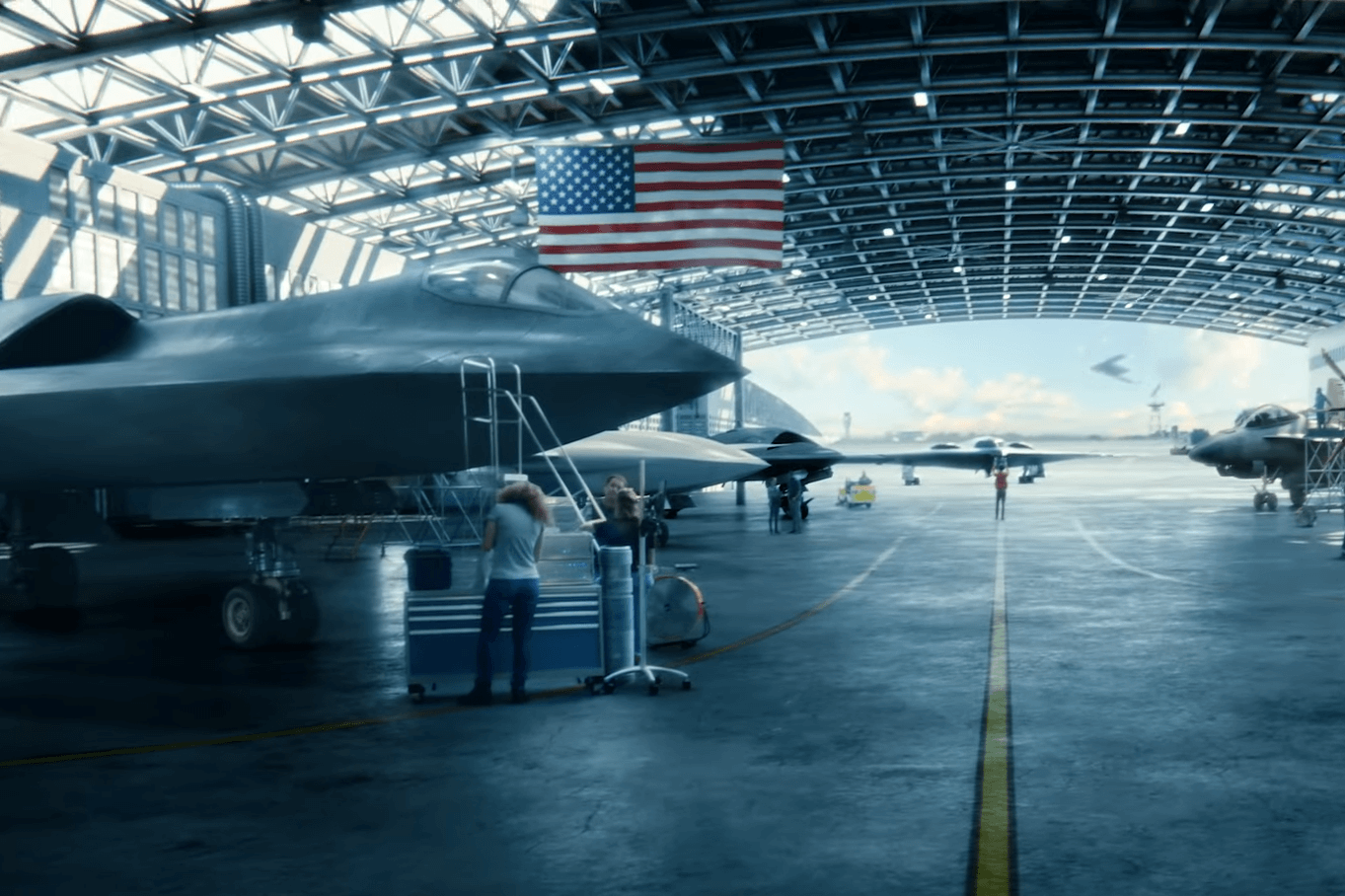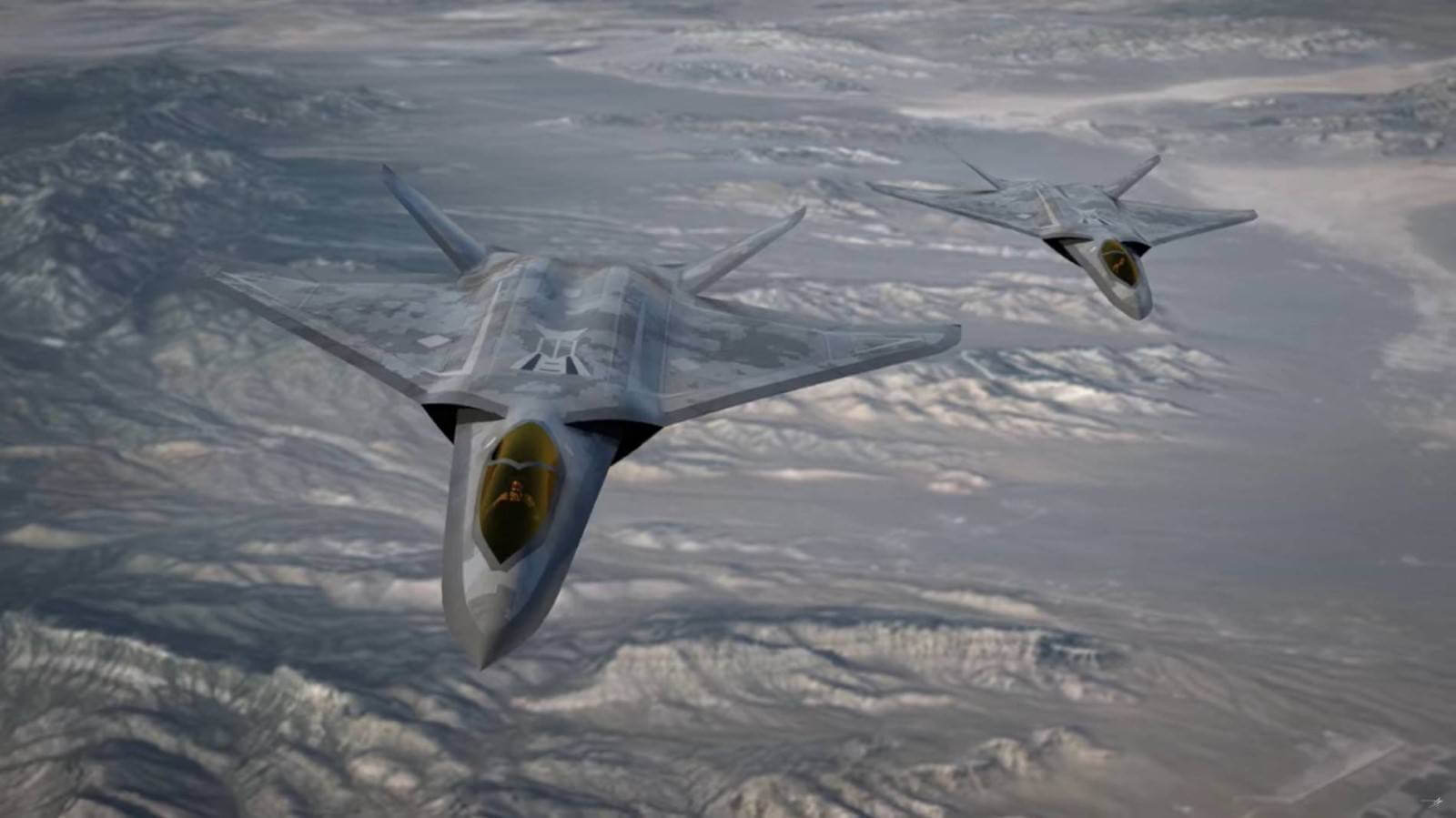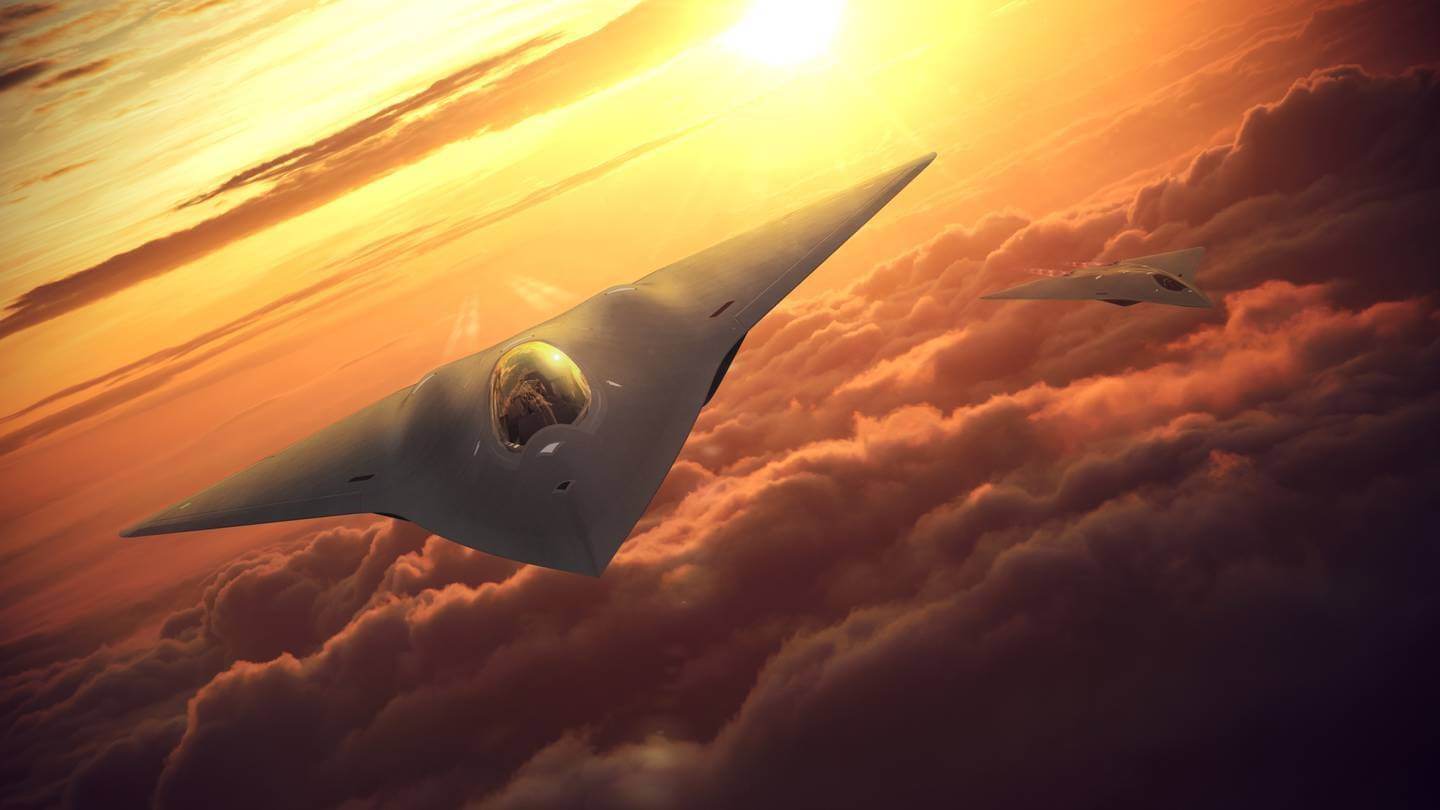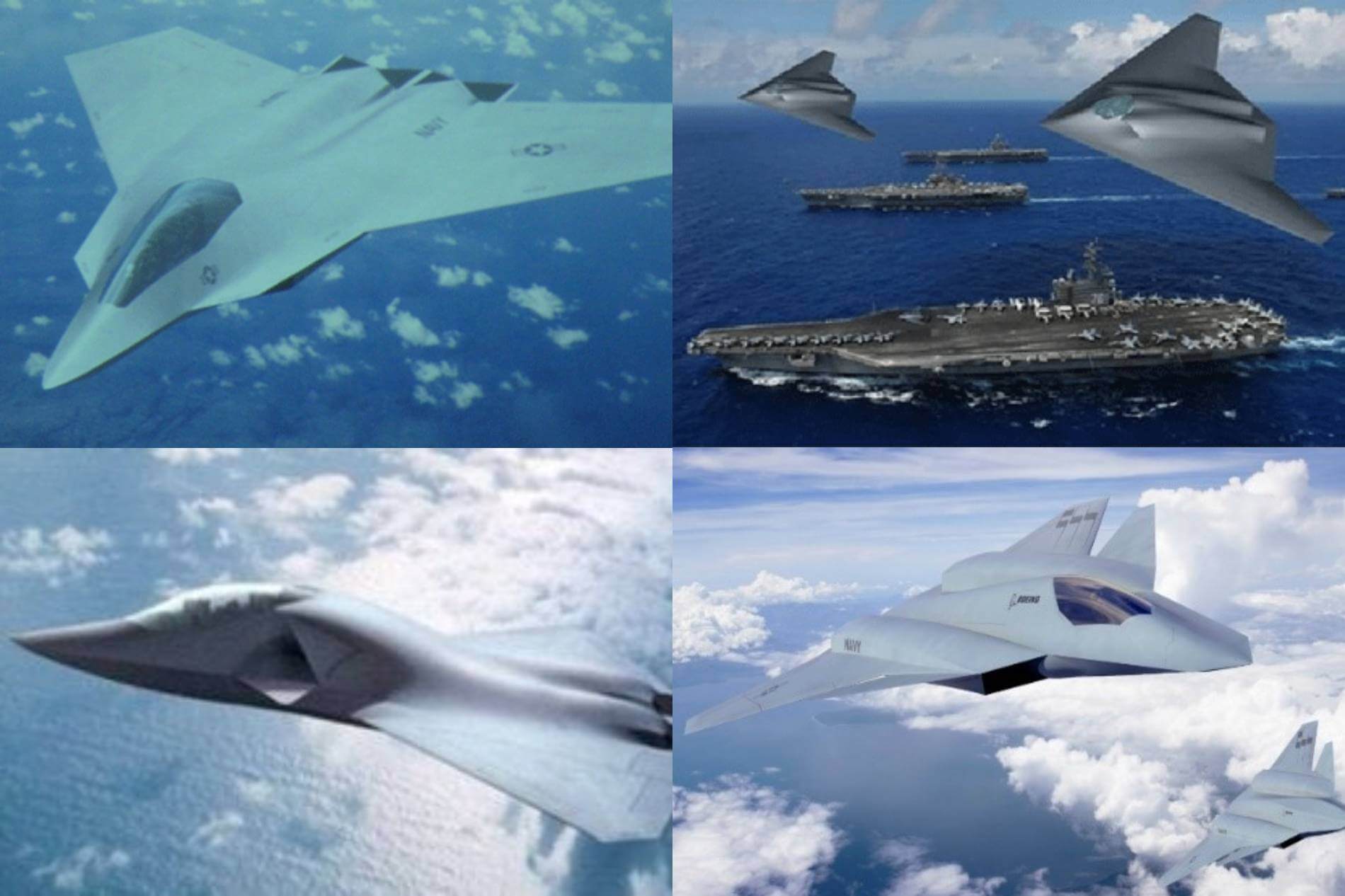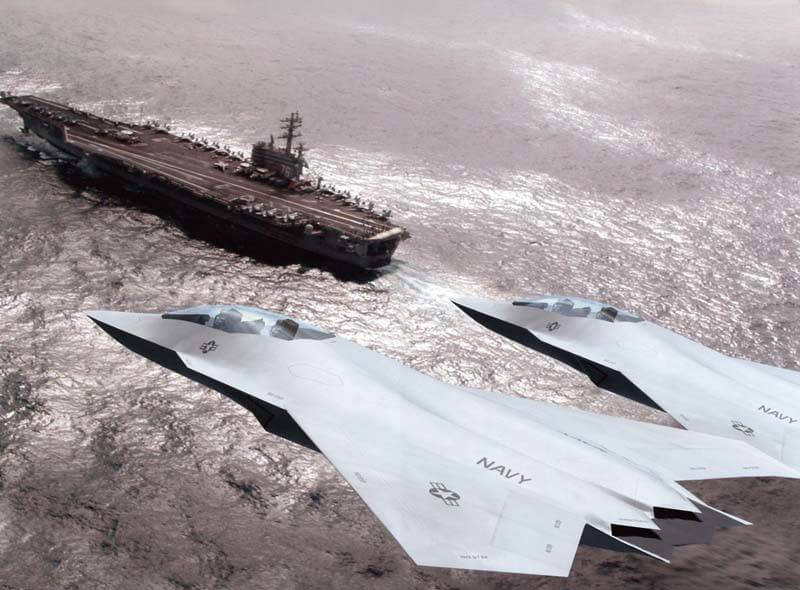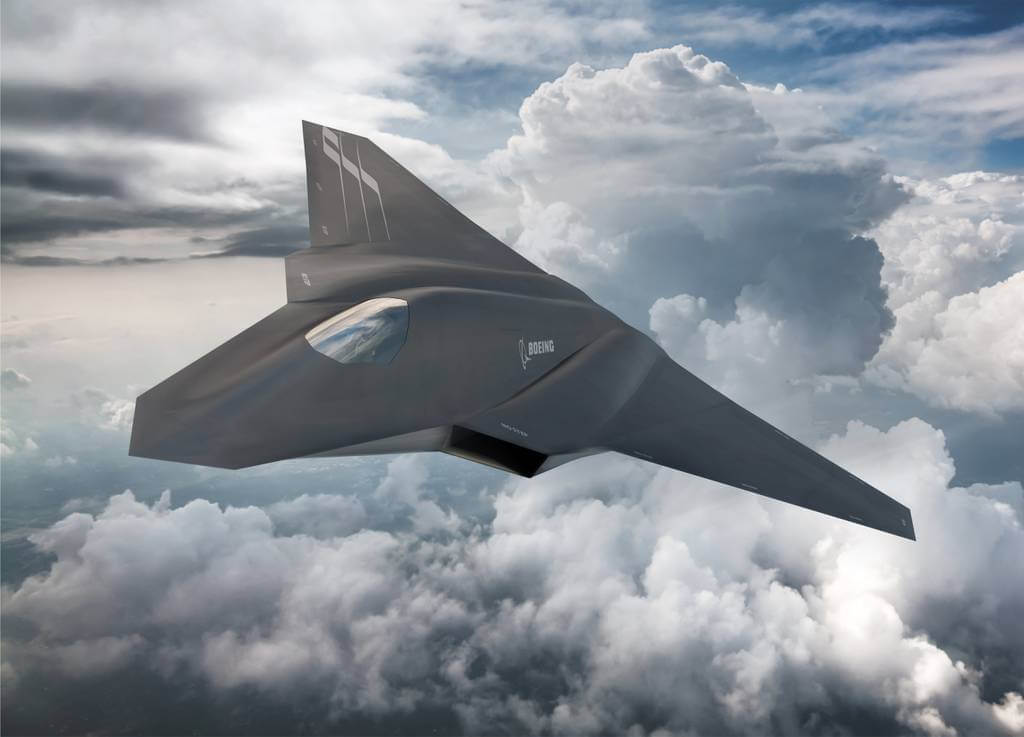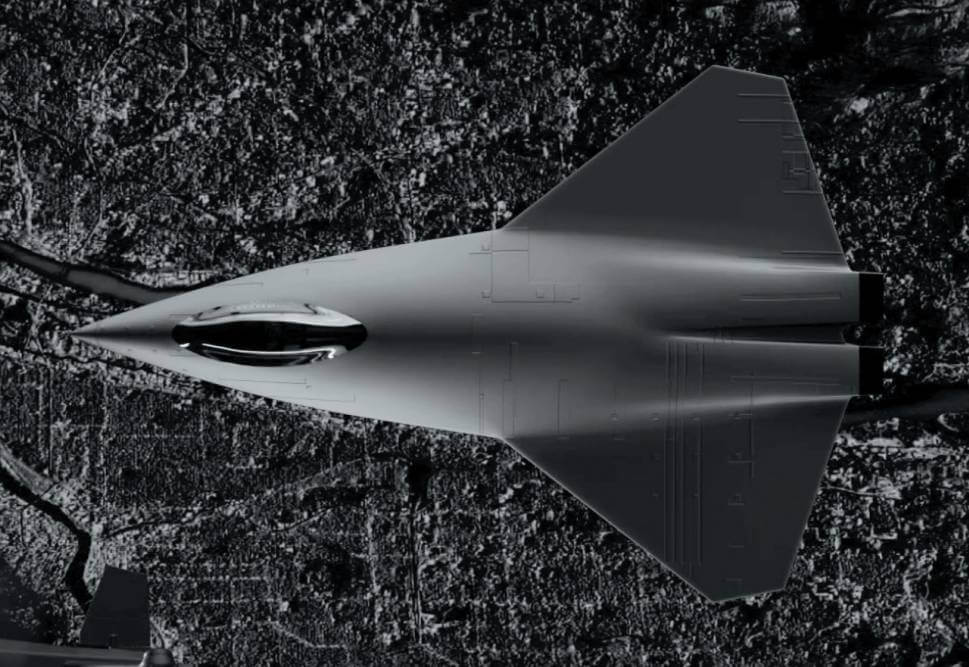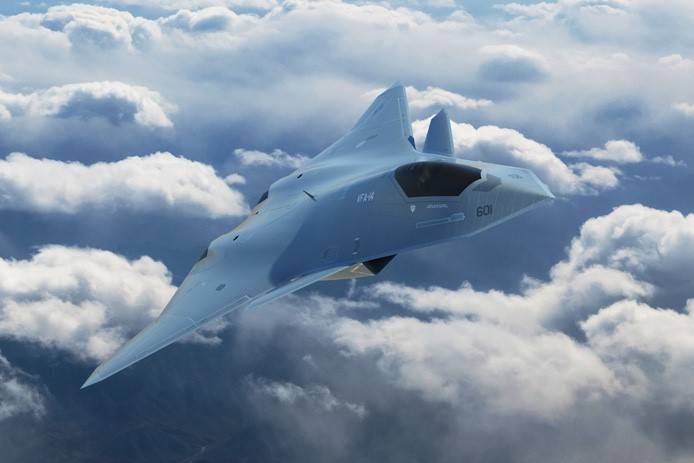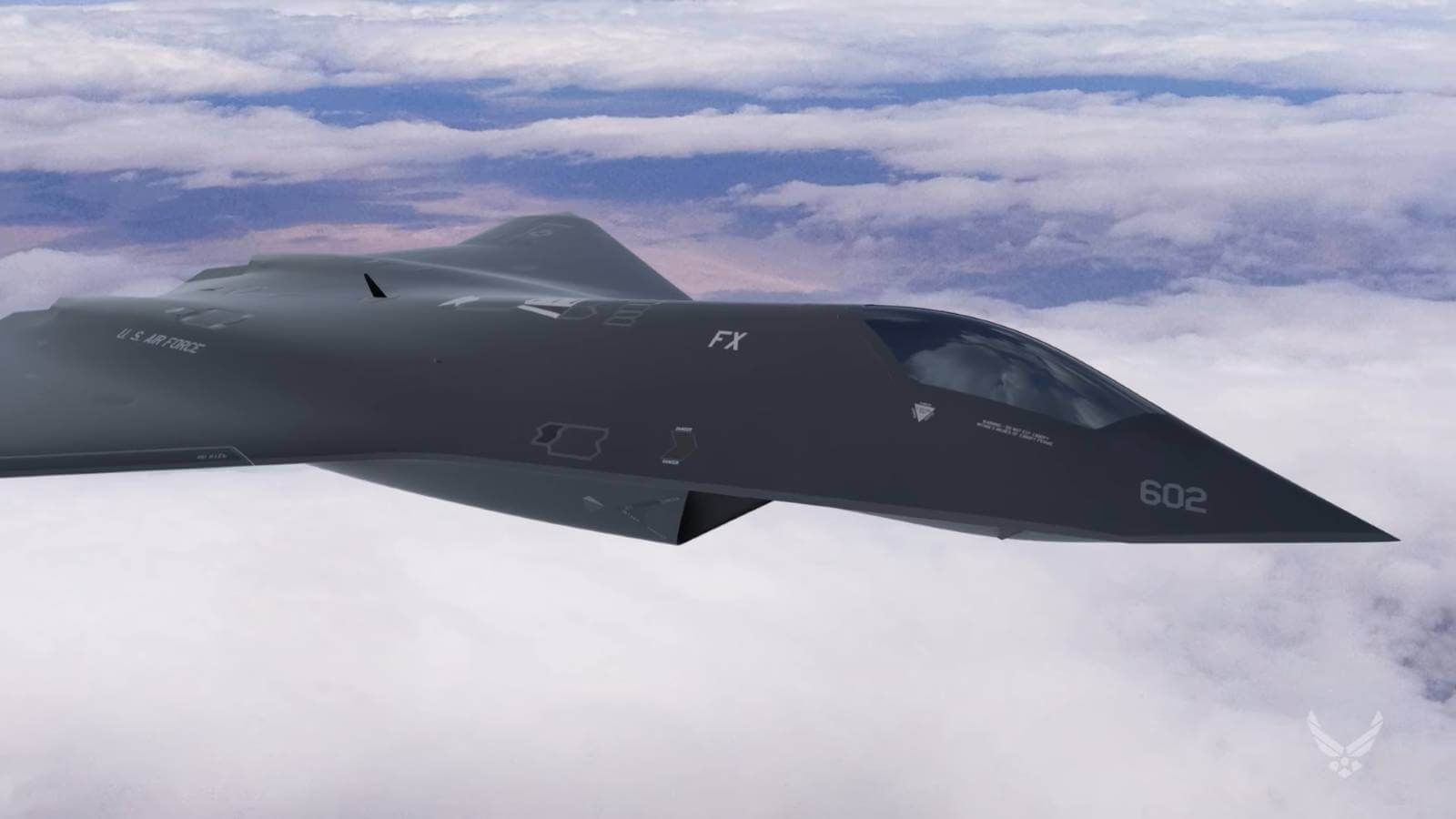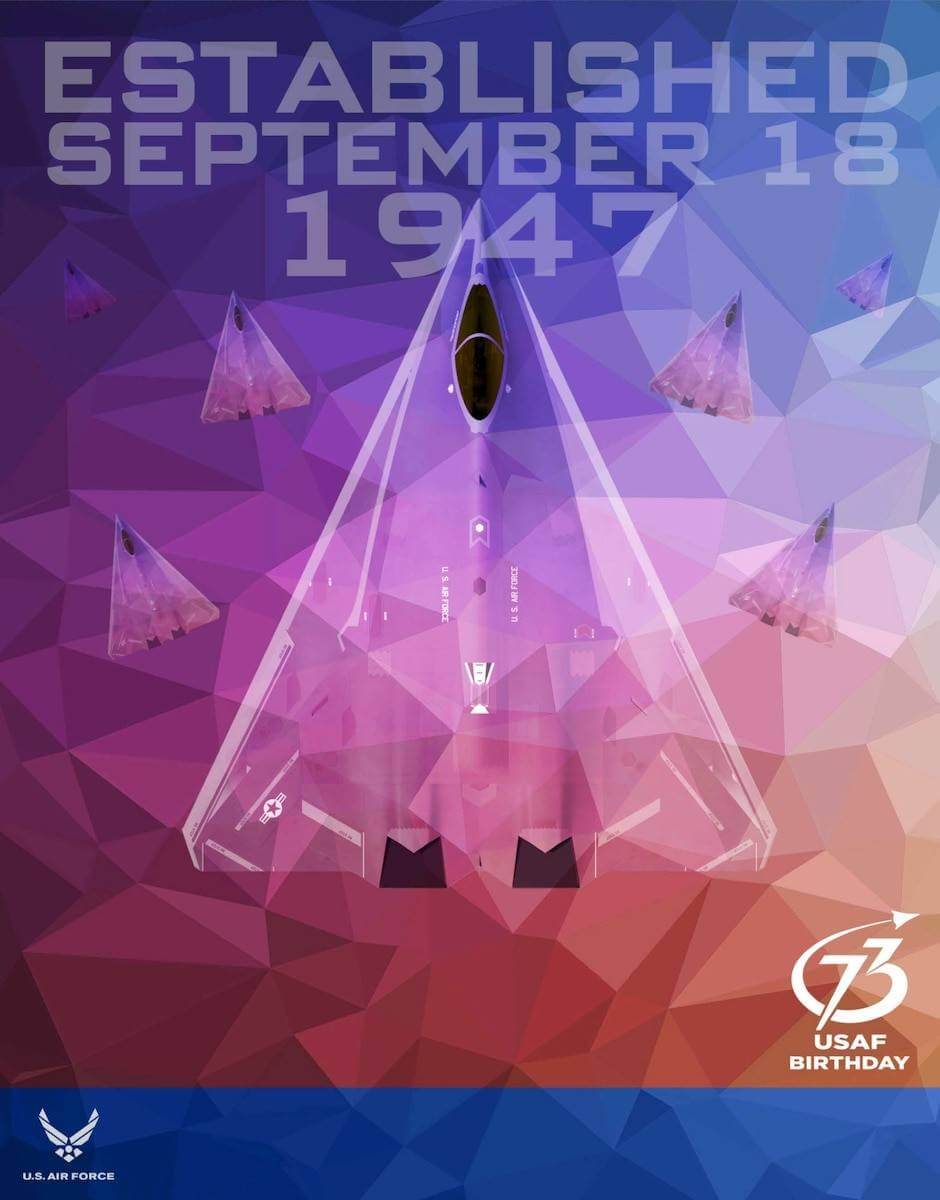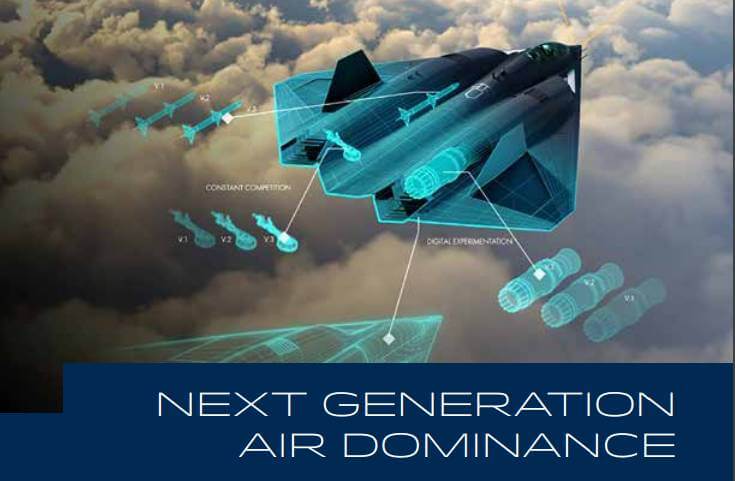Sixth-generation fighter jet programs are some of the most interesting and secretive weapon development projects in the aviation industry. They predominantly belong to two categories: those that have been widely publicized, and those that we know very little about.
While the Chinese and Russian programs fall into the second category, those under development in Japan and Europe belong to the first.
But the United States’ Next Generation Air Dominance (NGAD) project is somewhere in between. Its timeline and budget are constantly discussed, and the US Air Force (USAF) even reported that it had flown a prototype of the jet. However, in contrast to the Tempest, the FCAS or the F-X, the US has revealed surprisingly little in terms of characteristics or even the appearance of the aircraft. That is, unless we count concept art and 3D renders of the NGAD. While there is certainly an abundance of concepts out there, they are all different.
A system of systems
There are several reasons for these differences. Firstly, there are two programs referred to as NGAD, one which is overseen by the USAF, and another by the US Navy (USN). Both envision the fighter jet of the future not as a singular aircraft, but as a system of systems – a collection of different aircraft performing different tasks as a team.
While a manned fighter jet remains at the center of this arrangement, much of the actual offensive capability depends on a swarm of drones of all shapes and sizes controlled by the jet.
Additionally, a number of companies are currently working on these programs. The Pentagon dropped its regular acquisition process in favor of hiring companies to carry out separate tasks, such as designing specific components or subsystems.
And while recent reports indicate that this novel approach has at least been partially abandoned for the USAF’s NGAD program, the procurement process for the service’s sixth-generation fighter still differs from the ways fifth- and fourth-generation jets were selected.
The result? An onslaught of concept art, with many of the participating companies presenting their own visions of the NGAD, focusing on the parts of the system they are responsible for designing, and often ignoring everything else.
So, what have these companies proposed? And what can we find out about the NGAD just by looking at these images?
Northrop Grumman’s laser-toting flying wing
The first concept images of a sixth-generation fighter jet, attributed to Northrop Grumman, predate the NGAD program entirely. They can be traced back to at least 2009, and show a tailless twin-engine airplane armed with a direct-energy weapon. While the images might have some relation to research programs carried out at the time, there is simply not enough context to judge whether the company was significantly invested in sixth-generation jets back then.
However, those early images show some similarity to the visualization revealed by the company in 2015, just a year after the NGAD program was initiated. The image portrayed a tailless blended-wing-body aircraft, firing a laser at incoming missiles. The theme of direct energy weapons was retained from the picture published in 2009, and the overall shape was somewhat similar. However, this new representation was an actual piece of concept art rather than a placeholder intended to portray a laser weapon.
Northrop Grumman’s first NGAD concept (Image: Northrop Grumman)
The jet was tailless, with air intakes behind the cockpit, an unusual configuration at best. “This looks a lot like a baby B-2, and this is really getting into our sweet spot,” Chris Hernandez, Northrop vice president for research, said at the time.
However, the picture appears to be quite stylized and provides little detail.
A year later, the company released a follow up to its previous concept, a TV commercial titled “Just Wait”, which elaborated on the design. It showed three jets flying in a formation, and they looked a lot like photorealistic renderings of the earlier picture, with two afterburning engines, a single-pilot cockpit and delta wings.
NGAD concept from Northrop Grumman “Just Wait” commercial (Image: Northrop Grumman)
In 2021 the design was revisited, this time in another Northrop Grumman promotional video. It featured a hangar full of computer-generated models of prospective aircraft, which the company appeared to be working on, and, in the foreground, a familiar shape was clearly visible.
NGAD from Northrop Grumman’s 2021 video (Image: Northrop Grumman)
Besides several similarities, the latest variant differs significantly from its predecessors. The air intakes appear larger and are set further back from the cockpit, and the nose of the aircraft is far beefier in comparison with the earlier, sleeker version. It is clearly a different iteration of the model. While it has retained the same aerodynamic scheme, it also has a completely new airframe.
However, these alterations appear minor when compared to the changes in approach made by other companies throughout the years.
Lockheed Martin’s two sixth-gen fighters
Lockheed Martin’s sixth-generation fighter jet concept art also predates the NGAD. A particularly notable case is the company’s 2012 calendar, which featured a concept drawing of a next-generation fighter. It was attributed to Skunk Works, Lockheed Martin’s secretive advanced design division, and looked a lot like the YF-23, Northrop Grumman’s fifth-generation jet proposal, which lost the Advanced Tactical Fighter competition to the F-22 in 1991.
The same concept later appeared in several promotional videos, most notably the 2017 video “Skunk Works – On the Path to 75 Years of Innovation”, which offered the most detailed view of the design so far.
YF-23-like design by Lockheed Martin (Image: Lockheed Martin)
The company has not overtly associated the design with the NGAD program, simply referring to it as ‘Tomorrow’s Fighter’. However, because there is no other sixth-generation fighter jet program currently in development in the US, it seems reasonable that an association can be drawn.
It must be noted that out of all sixth-generation fighter proposals offered by US-based companies, this is most like those created outside of the United States. Europe’s FCAS, Japan’s F-X, as well as the Tempest, designed by a UK-centered team, all feature tails with only vertical surfaces.
However, this is not the only arrangement being explored by Lockheed Martin. The company published another concept image, which is highly reminiscent of the flying wing crafted by Northrop Grumman.
NGAD by Lockheed Martin (image: Lockheed Martin)
The above image began to make the rounds at the same time as the Skunk Works design and is likely to have first appeared as a concept drawing of the F/A-XX, the US Navy’s predecessor to the NGAD.
The USN established the F/A-XX program in 2012. Arguably the world’s first initiative to procure a sixth-generation fighter jet splintered into several programs rather than resulting in the purchase of an actual aircraft.
Lockheed Martin and Boeing were the program’s two main participants and likely carried their proposals over when the Navy began its NGAD initiative.
Boeing released a whole host of artwork associated with the NGAD. While all of these concepts appeared to be similar at first glance, they were also subtly different. Most of these images were carried over from the days of the F/A-XX.
During 2008-2010, the company published a number of concept images featuring tailless carrier-borne aircraft. Some of these were not particularly detailed, while others had a fair bit of artistic vision behind them.
Various F/A-XX concept images published by Boeing (Image: Boeing)
One of Boeing’s F/A-XX renders, widely used in the company’s promotional material ever since the early 2010s (image: Boeing)
It should be noted that while Boeing’s designs were often used by various media channels to illustrate the F/A-XX and the NGAD, they also laid the ground for another kind of illustration. These were designs made by independent artists, which were then confused with Boeing’s own designs by laymen and experts alike.
While this is not a unique phenomenon, it is especially common when it comes to the NGAD. For example, many of its depictions, both official and unofficial, were created by famous Argentinian industrial artist, Rodrigo Avella, a man who can be said to have been singlehandedly responsible for how we imagine the NGAD today. Avella said in an email to AeroTime that he has never collaborated with any of the companies working on the NGAD, however, it is likely that some of them have bought his art from online stores.
Sometimes (as with the case of his cover of Popular Mechanics) Avella’s pictures were used deliberately and with a proper indication of authorship, but there have been occasions where even the more prominent aviation outlets have attributed these images to various companies such as Boeing.
However, when issuing news and announcements regarding its advanced weapons programs, Boeing continues to almost exclusively use images from the F/A-XX-era, with very few exceptions.
One such exception appeared in 2016, when Boeing released a new concept image of a sixth-generation jet floating in the sky. Upon closer inspection it appears to be a slightly modified earlier picture, with the color changed and the canards removed. Does it represent the change of vision, or is it just a placeholder quickly pulled together by one of company’s artists? Only Boeing knows the answer.
The latest NGAD concept, released by Boeing in 2016 (Image: Boeing)
Collins’ and Raytheon’s digital jets
Collins Aerospace is heavily involved in the USAF’s NGAD program. The company is developing computer systems for the jet, and never misses out on the chance to mention this in its promotional material.
That material often features a small, slick, tailless twin-engine jet, highly reminiscent of Boeing’s designs from two decades ago. Several of Collins Aerospace’s brochures portray the jet from different angles and, while it is unlikely that the images represent an actual design, it seems likely that the basic shape is in line with what the company is working on.
Collins Aerospace’s NGAD concept (Image: Collins Aerospace)
Some of the company’s material features another design: a larger tailless jet with canards. The same design is also used by another aerospace giant, Raytheon Technologies, which is reportedly working on developing weapons systems for the NGAD.
The same picture, featured below, is often attributed to either Raytheon or Collins. However, a quick search shows that the companies simply use another one of Avella’s designs.
Avella said that the model had been for sale on Turbosquid, an online D3 model marketplace, for some time, which is likely how the companies were able to get their hands on it.
Rodrigo Avella’s F/A-XX concept, used by both Raytheon and Collins (Image: Rodrigo Avella / Raytheon Technologies / Collins Aerospace)
All the Air Force’s NGADs
The US Air Force is yet another avid user of concept images created by prominent artists. Firstly, there was the Air Force 2030 “Call to Action” video which featured a lengthy segment portraying a purported operation of an unnamed futuristic jets and drones, lasers and holograms included.
NGAD, as featured in USAF Research Laboratory video (Image: Rodrigo Avella / USAF)
However, the concept can yet again be recognized as one of Avella’s designs, proudly posted on his webpage. In fact, pictures of the same model have become ever-present in the USAF’s promotional material during recent years. These have also found their way into the media and are often attributed to the service itself.
There was also the USAF’s 73rd birthday graphic, which featured a stylized image of a triangular jet. It is also one of Avella’s designs, however, this one wasn’t a result of a collaboration.
“The plane used to make that poster is a model of mine that the agency that made the design ‘borrowed’ without even consulting me,” Avella told AeroTime.
USAF poster with NGAD (Image: USAF)
While the USAF and multiple aerospace companies have used Avella’s designs on numerous occasions, the artist has never been involved in any of their projects.
“Regarding advice or inspiration from the USAF or any entity, I have had nothing. I just read and see what the big companies show (and analyze what they don’t show, because that’s what they must really be doing for sure),” Avela explained.
And finally, we get to the big one – an image revealed in the USAF Acquisition report for 2019-2020.
Page 55 of the report features a section on the NGAD program, with a piece of artwork that attracted a lot of attention at the time.
A jet with what looked like foldable vertical stabilizers was featured. Several text blurbs highlighted buzzwords associated with the program, such as “Constant competition” and “Digital experimentation”, while a wireframe of an apparent unmanned variant was present in the lower corner.
Was this image an actual design that was being worked on by the USAF? Or was it yet another placeholder created by an artist? We will have to wait to find out.
NGAD graphic from USAF’s report (Image: USAF)

